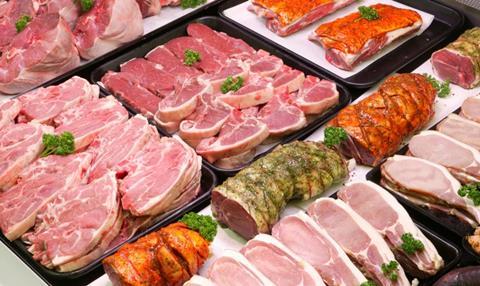According to Kantar's latest update on the fresh meat, fish, poultry and meat-free markets covering the 12 weeks to 30th October 2022 prices in fresh meat and poultry continue to rise, with the average price in the category now £5.97, 9.8% ahead of last year.

Kantar reported that this means that whilst we are seeing value growth of 4.9% across the sector, it is accompanied by a volume decline of 4.1%.
The cost of living crisis also means cheaper proteins are continuing to do relatively well as shoppers seek to save money. Chicken and pork both overperform in volume terms, declining only 0.1% and 1.0% respectively, despite the fact that chicken has experienced the largest price increases of all proteins (up 17%). Nevertheless, it remains £4.31 per kilo, cheaper than both beef and pork and continues to benefit from shoppers trading down through proteins, particularly from beef to chicken.
Chilled fish has a similar story to the other more expensive proteins such as lamb and beef. Price rises of 4.8% arelower than many alternatives but high baseline prices means it is still vulnerable to downtrading. Chilled fish volume losses of 8.2% are too much to be offset by price increases and consequently the category isinoverall decline. Natural is the only sub-sector within chilled fish in growth, although it is one of the most expensive. This shows that shoppers are willing to pay more if they feel there is a justification. Elsewhere, the underperformance of battered fish suggest the interaction between chilled and frozen will be important to watch through the winter. Coated fish is more prominent in the freezer aisle, and therefore, its chilled equivalent could be vulnerable to losses to frozen.
Red meat and meat-free
Processed pork performs in line with meat and poultry, with sausages slightly behind and bacon slightly ahead of the average.
Both categories outperform the wider market in volume terms, declining by under 4%. There have been price rises but no more than is being seeing elsewhere in the market.
Elsewhere in fresh processed, burgers record growth of more than 10% in value terms, one of the strongest performances anywhere within meat. However, even this is reliant on price increases –as volume is down by 0.9%.
Meat free sees a similar pattern. Price rises of 9.2% cancel out a volume loss of 5.8%, leaving the category growing by 2.8%
Kantar said it is seeing a loss of around 400k shoppers, down from 13.6m to 13.2m for the sector.
Alex McDonald, client manager at Kantar said: “It is an interesting time for meat free. Kantar’s Who Cares Who Does Survey showed the number of shoppers citing environmental concerns for their shopping decisions is in decline for the first time in several years.
"Additionally, we know from previous recessions that health concerns, which have been an important driver of meat-free growth in the last few years, can become less important.” Veganuary ranges will launch in just over six weeks and should help re-energise the category.
"For the rest of the protein market –the key question," he said, "is how shoppers will seek to further manage their spend as household budgets come under greater strain. We have seen cheaper proteins such as chicken overperform, but as grocery inflation gets closer to 15%, trading down through proteins may not be enough for some shoppers, and some may seek to manage their spend in more drastic ways."
This story was originally published on a previous version of the Meat Management website and so there may be some missing images and formatting issues.












